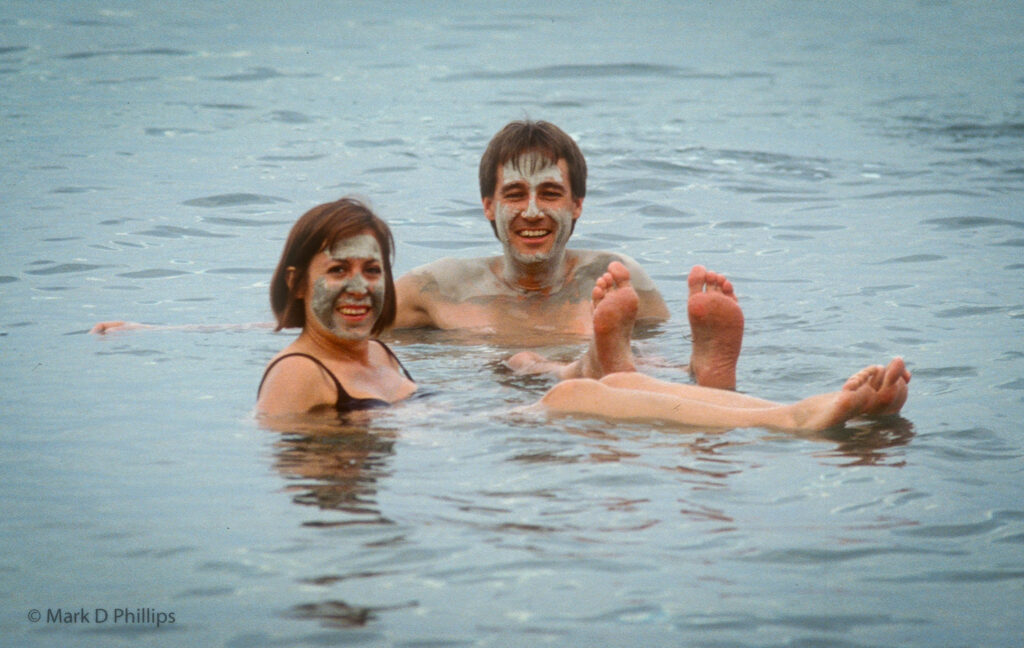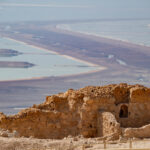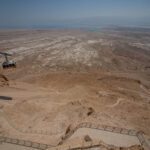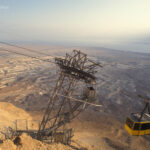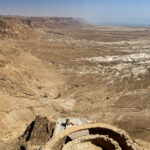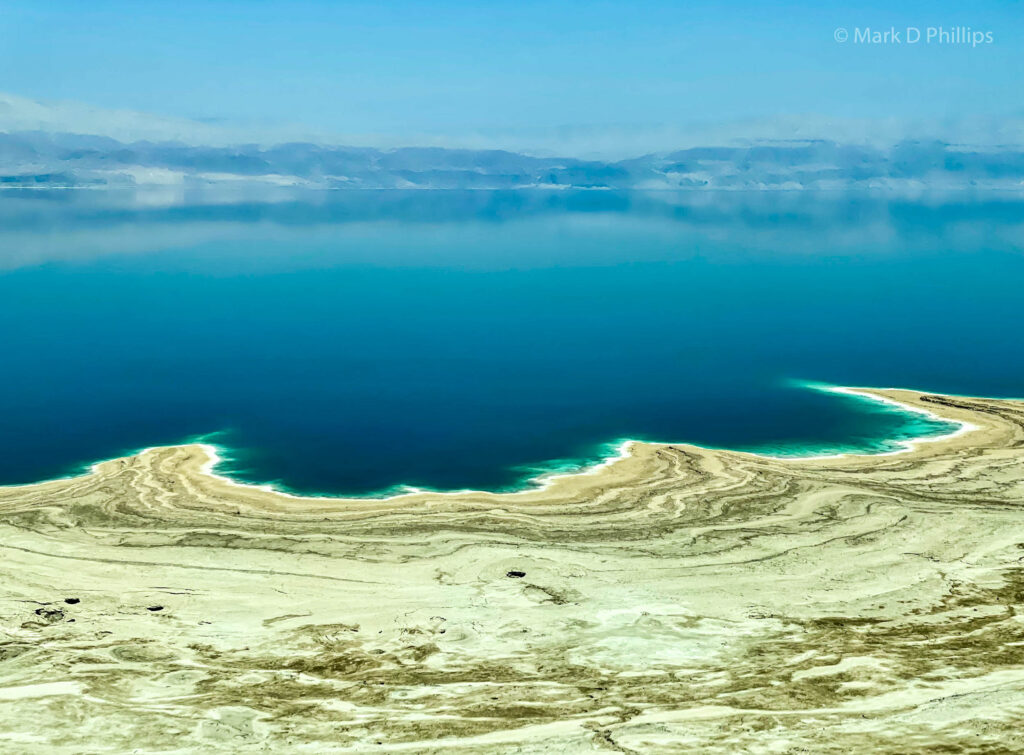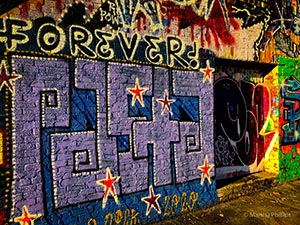Driving along Highway 90 in Israel, a desolate and fascinating landscape greeted me. Thirty years ago, I was beckoned by the salty waters of the mineral-rich Dead Sea, located at the lowest point on Earth. In July 2022, I returned to a starkly different place.
Andrea Peyser and I had frolicked in the buoyant water at Ein Gedi on the sea’s northern basin in 1992. Now the resort is abandoned, a decaying ghost town in the middle of sinkholes — a nightmare scene out of a science fiction novel, fenced off and marked with DANGER signs. When the Ein Gedi Spa resort closed in March 2020, the water had receded 2½ miles away (4 kilometers).
The Dead Sea is 1,430 feet (436 meters) below sea level with a staggering 34 percent salinity, giving it the honor of being the world’s deepest hypersaline lake, reaching a maximum depth of 1,000 feet (305 meters). It has shrunk to half the size it was in 1976, losing as much as 4 feet per year (1.2 meters).
The most striking and startling change in the last three decades is that there are now two distinct bodies of water, the north basin which is the actual lake, and the south basin, where water from the north basin is pumped into ponds to evaporate, leaving behind salt and other minerals.
On this trip to the Dead Sea, we were taken to the “new” resorts in Ein Bokek, which are located on the shore of a massive, 30-square mile (80-square-kilometer) evaporation pond. Once the south basin split completely and began to dry, the evaporation ponds were created by the Dead Sea Works to harvest magnesium chloride, industrial salts, de-icers, bath salts, table salt, and raw materials for the cosmetics industry.
The water is very shallow and freakishly superheated, coming close to the temperature of the hot springs in Colorado. I didn’t enjoy the heat. But the sheer buoyancy, the feeling of being forced up and out of the dense, salty brine, is otherworldly. One could sit upright in the sea without the aid of any flotation device and read a newspaper without getting the pages wet. It feels as if one is sitting atop worn-out foam. The water is much shallower and the salt formations much thicker on the shoreline than I remembered. The sharp shards of salt are so thick on the bottom that if one’s back touches, it’s easy to get painful scrapes. I was warned not to shave prior to taking the plunge as the salt attacks any abrasion. It’s fascinating, even fun – just not my idea of a lazy day at the beach.
Leaving Ein Bokek and heading back along the north basin, the shapes of sinkholes are visible throughout the empty land stretching from the highway to the shoreline. Sinkholes first began appearing in the 1980s, and as the water table shrank, the numbers have become staggering, with over 6,000 sinkholes on the western (Israeli) side alone, according to Dr. Michael Lazar of the Department of Marine Geosciences at the University of Haifa.
The Dead Sea has lost its main source of water. The Jordan River Basin is delivering less than 10 percent of its historical average into the Dead Sea. The water resources stretching from the Sea of Galilee (also known as Lake Tiberias) are put to use by three governments; the Kingdom of Jordan, Palestine, and Israel. Jordan just canceled the highly touted Red Sea-Dead Sea canal joint project with Israel and the Palestinian Authority, that would have permanently linked the two bodies. Jordan is now working on its own project to pump water from the Red Sea to a desalination facility in Aqaba for introduction to the north basin. Jordan is one of the most water-starved countries in the world with a population of 10 million. All of this is exacerbated by drought and possible climate change.
It turns out the Dead Sea sinkholes are part of giant cave systems called karsts, which carry water underground from one to another. As the highly saline water receded, it left behind a thick layer of salt about 60 feet beneath the surface. Rushing flood water during the winter carves out the salt, leaving a cavity in the salt layer, which then collapses in on itself. Dr. Gideon Baer, who leads the Geological Survey of Israel unit that studies and monitors the Dead Sea, estimates that 500 new sinkholes open up every year, an average of more than one per day.
The geopolitics of water will be a challenge in the quest to save the Dead Sea, written of in both the Quran and Old Testament. Called the Salt Sea in Genesis 14:3, it is mentioned sixteen times throughout the Bible. In the Quran, the Dead Sea is the site of the ancient city of Sodom, destroyed by God for the people’s wickedness. According to the Quran, the punishment was to “turn the cities upside down, and rain down on them brimstones hard as baked clay, spread layer on layer, marked from your Lord” (Quran 11:82–83). Some say the city is beneath its water.
According to Prof. Nadav Lensky, head of the Dead Sea Observatory at the Geological Survey of Israel, the Dead Sea’s level will eventually stabilize once the salt concentration is so high that evaporation levels plummet and are balanced out by the little fresh water that still flows in from the Sea of Galilee and streams to the west and east. But it could be several hundred years before that occurs. With populations growing in the desert, will there ever be enough water? The world’s top scientists are working on that very problem.
